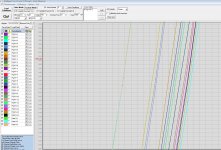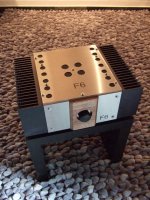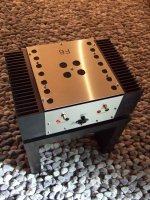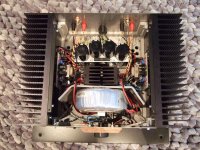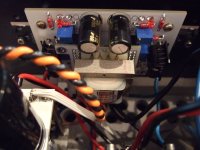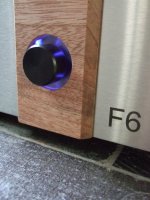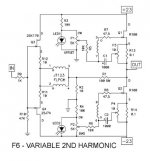I'll take one to BAF.

Nelson, is it going to be a commercial or DIY amp?
Here is my finished F6.
First of all I have to thank Gerd (generg) for measuring and adjusting the amp!
Without his knowledge and equipment the amp wouldn´t sound on this high level.
Unfortunately the psu caps were delivered in a bad condition.
That´s the reason for the grooves on top of them.
Regards Andreas.
First of all I have to thank Gerd (generg) for measuring and adjusting the amp!
Without his knowledge and equipment the amp wouldn´t sound on this high level.
Unfortunately the psu caps were delivered in a bad condition.
That´s the reason for the grooves on top of them.
Regards Andreas.
Attachments
When I start to build an amp I never expect the best sounding amp ever.
It´s always a nice experience.
It depends on the whole setup. I combined the F6 at this moment with Ono, Aleph P 1.7 and speaker with a ceramic Tweeter and Midrange.
The F6 sound very detailed but never harsh. I´m surprised of the punch of the bass and it gives a lot of room informations.
In comparison to my Aleph J the AJ sounds much warmer.
The F6 is for sure not everybodies darling.
But it´s always hard to describe a sound ...
Next I will connect the F6 to vintage speaker (University 312) but this takes time.
The black button is a turnable switch.
It´s always a nice experience.
It depends on the whole setup. I combined the F6 at this moment with Ono, Aleph P 1.7 and speaker with a ceramic Tweeter and Midrange.
The F6 sound very detailed but never harsh. I´m surprised of the punch of the bass and it gives a lot of room informations.
In comparison to my Aleph J the AJ sounds much warmer.
The F6 is for sure not everybodies darling.
But it´s always hard to describe a sound ...
Next I will connect the F6 to vintage speaker (University 312) but this takes time.
The black button is a turnable switch.
Attachments
No guide yet. Might not be ever... It's designed around unobtanium... But you can use IRF transistors as decent substitute. The character of this amp is going to be imparted strongly by the transformer, so a Mosfet F6 is still an F6.
Look at Tea-Bag's blog for info on his excellent boards. It's as close to a guide as there is currently.
http://www.diyaudio.com/forums/blogs/tea-bag/941-f6-clone-convertible-pcb-blog.html
http://www.diyaudio.com/forums/blogs/tea-bag/941-f6-clone-convertible-pcb-blog.html
Look at Tea-Bag's blog for info on his excellent boards. It's as close to a guide as there is currently.
http://www.diyaudio.com/forums/blogs/tea-bag/941-f6-clone-convertible-pcb-blog.html
http://www.diyaudio.com/forums/blogs/tea-bag/941-f6-clone-convertible-pcb-blog.html
Got it. I reviewed the schematics, and think I will pass. Never like to build an amp with parts from the underworld, unless I have a barrel full of them!
Interesting design, and I appreciate Nelson and the others for sharing their work.
Now, awaiting m 4U case and listening to my F5.
Interesting design, and I appreciate Nelson and the others for sharing their work.
Now, awaiting m 4U case and listening to my F5.
Guys if we were to add a volume control and work it as an integrated amp, what would be a good idea?
Just a pot in the front?
Is the input buffer enough? Do we need another one before the pot? What pot value? Somehting like 25k?
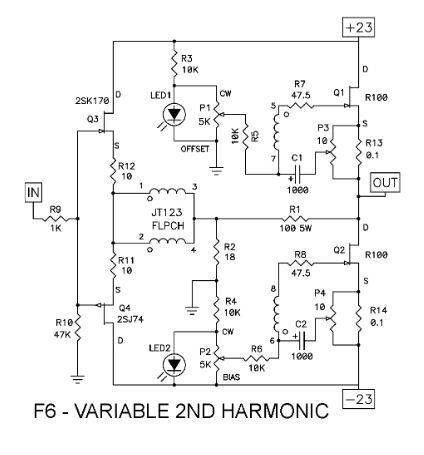
Just a pot in the front?
Is the input buffer enough? Do we need another one before the pot? What pot value? Somehting like 25k?
Attachments
Last edited:
Sometimes a solution without a (cap-) pre lacks room and colors, but they deliver often more precision of sound, but the narrower stage.
In case of F6 with its huge stage and as Jon ver Halen said "much harmonics" I have nearly no doubt it will work fine.
I know that a plain pot can create problems with driving the cable after it and may have problems being driven by the source.
That is why I am asking, what is your opinion on which would be a rather more optimal configuration?
My thoughts were to use something like a B1 or an additional push pull pair of jefts in front of the pot, but now that I think about it, I am currently using a DCB1 with a pot in its entrance and it s absolutely awesome.
so my guess is that a pot as near as possible to the input jfets should cause no significant issues... But I guess an additional buffer would make it an easier load for the source... but it would also add more jfet character to entire thing.... pfffff... decisions....
Last edited:
- Home
- Amplifiers
- Pass Labs
- F6 Amplifier
